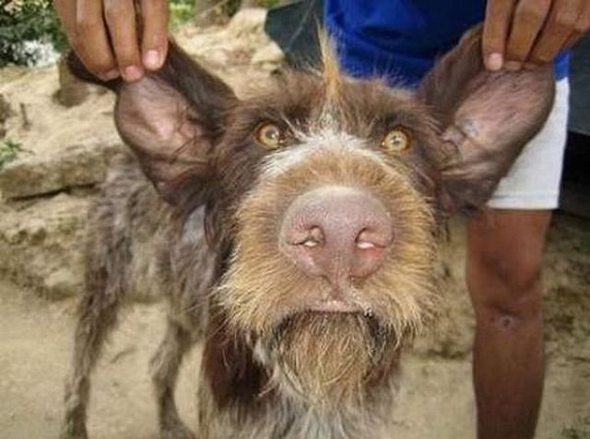| Huck & pal Homer after a romp and a swim |
I've been trying to lead off this post with a sentence like, "I love to watch dogs play", but I keep thinking of exceptions. I'm an anxious wreck at a dog park. I'm a nervous nelly supervising play groups when I'm teaching puppy class. And I'm on pins and needles watching play between shelter dogs that we've paired up for the first time. Am I a neurotic, smothering mother hen? Well, I prefer to think of all this as well-informed vigilance. I know just enough about the complex dynamics of dog play to know that a) dogs are exchanging subtle signals constantly, which we don't always catch and often don't understand, and b) dogs' enthusiasm can escalate to hyper-arousal, which can then tip into aggression, seemingly without warning. So here are some thoughts on safe play.
| Eyes averted, tails half-mast |
First, a couple myths to debunk. If dogs are wagging their tails, doesn't that mean they're feeling happy and friendly? Ah, if only it were that cut and dried. No, wagging tails don't always broadcast playfulness. Experts tend to agree that tails convey a ton of information, but they don't always agree on what tails are telling us. It seems reasonable to interpret loose, slow wags at "half-mast" or in circles as hints that dogs are having fun. We can probably surmise that high, stiff, fast wags mean that dogs are on alert and haven't made up their minds yet whether they feel playful at that moment or not. But maybe the best advice is, don't put too much stock in what you think your dog's tail is saying. Look for bigger patterns, which we'll talk about in a second.
| Well-intentioned neck gnawing! |
These are some characteristics of good play. They're generalizations, but they're good guidelines.
Friends again after a couple corrections. Huck grouched at
Homer for dunking her underwater with his paw. Homer changed tactics.
|
| Self-interrupting for a quick sniff |
It's reciprocal. Dogs who read each other adeptly develop an easy play rhythm and take turns. Even the roughest play can be fun for both dogs as long as there's a tacit agreement that goes something like this: I'll let you hump me, but you have to let me chew your neck. Or I'll let you stand on me while I lie on my back, but you have to let me do it next. When play is reciprocal, you don't hear a lot of yelping and grumbling. When one dog is more assertive and the other is feeling overwhelmed, you'll often see the overwhelmed dog trying to disengage, with a tucked tail, a low crouch, and maybe some disgruntled vocalization.
It's pretty quiet. When dogs are playing nicely, you might not hear much sound. Some dogs like to bark and play-growl while romping, but unless that's their normal play style, we should pay even closer attention if dogs start getting noisier and more guttural-sounding. It's often a sign that things are amping up and they might need a break.
| Play bowing, or kowtowing, to Maggie Moo. |
It's fairly low and horizontal. Again, this is a generalization; some quite compatible dogs like to leap and dance during play. But for the most part, you want to see dogs playing close to the ground, and when they start to go vertical, they may be getting aroused to the point of getting over-aroused. Time for a break.
Here's a good rule of thumb when supervising a play session between two dogs: When in doubt, call a time out. If play is getting a bit too frenzied for your liking, step in and gently take your dog's collar, have your dog's friend's owner gently take that dog's collar, and enthusiastically invite them to trot off with you for a moment or two. Avoid using treats to lure your dog away because dogs can be pretty protective of their yummies, even with their pals. It's always better to separate dogs before a fight breaks out. Remember, even between buddies, play can get so intense that it suddenly morphs into a fight. It's a fine line, and you don't want to cross it. An ounce of prevention is worth thousands of dollars at the emergency room.





